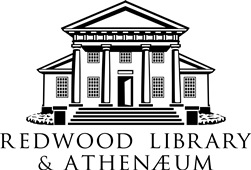Biographical note
John Edward Rovensky (1880-1970) was born January 13, 1880, near New Glasgow, Nova Scotia, Canada. He was the second eldest child of John (1853-1916) and Agnes (1857-1930) Rovensky, recent immigrants from Pilsen - a city in western Bohemia in the modern day Czech Republic. The couple’s other children included: Frank (1877-1932), Anna (1884-1952), Joseph C. (1886-1965), Mary (1889-1969) and William (1890-1982). The Rovensky family moved to Allegheny, Pennsylvania, in 1885 and later to Jeannette, Pennsylvania, in 1893 to find a better market for their glass making and etching business.
When John E. Rovensky was sixteen, he contracted tuberculosis and dropped out of high school. In 1900, when his health improved, Rovensky took a job as an errand boy at the First National Bank in Philadelphia, Pennsylvania, and began his slow but steady rise through the commercial banking hierarchy. To compensate for his lack of a formal education, Rovensky became a member of the American Institute of Banking which offered business, accounting, and economic courses to aspiring young bank officers and clerks. By 1913, Rovensky was promoted to assistant cashier at the First National Bank and was sent to southern and eastern Europe to set up arrangements with banks in those areas.
In July 1913, amid rumors that the First National Bank was about to close, Rovensky immediately set into action and opened his own banking house, Rovensky and Company on July 7, 1913. Because of the success of this endeavor, Rovensky was recruited by the National Bank of Commerce in New York and started working there in January 1914 as an assistant cashier in charge of foreign trade. Rovensky handed over Rovensky and Company to his brother, Joseph, but when the First National Bank of Pittsburgh reopened several months later, Joseph and his associates returned to their jobs there and the Rovensky and Company bank closed.
Within two years of his arrival in New York City, Rovensky was named vice president and remained in this position until 1926. He then moved to the Bank of America and later to the National City Bank in 1931, where he continued to work as a vice present for the next twelve years until his retirement from banking. During his career as a commercial banker, Rovensky built an impressive clientele of merchants and manufacturers. Some of his most notable accounts were with William Randolph Hearst, newspaper publisher, James Casey, founder and president of the United Parcel Service, and Charles J. Hardy, president of the American Car and Foundry Company (later ACF Industries).
Following his retirement from the National City Bank, Rovensky was asked to work full time as the chairman of the executive committee for the American Car and Foundry Company. By 1951, at age seventy one, Rovensky became chairman of the board and was active in diversifying the company’s business with atomic energy by taking part in the development and transportation of the hydrogen bomb in 1952. In 1954, Rovensky retired from all active business interests and devoted himself to his family, friends, and his hobbies.
John E. Rovensky was first married to Madjesia Ewing (1883-1972) in 1904. The couple had one daughter, Jane E. Rovensky Grace (b. 1917), and later divorced in 1947. In June 1954, he married the wealthy socialite, Mrs. Sarah Mae (Maisie) Cadwell Manwaring Plant Hayward (1877-1956). The Rovenskys divided their time between their homes on Fifth Avenue in New York City, in Palm Beach, Florida, and at Clarendon Court on Bellevue Avenue in Newport, Rhode Island. Rovensky was active in the country and social club scenes in all three locations. When Maisie unexpectedly died of a heart attack on July 21, 1956 in Newport, Rhode Island, Rovensky was left in charge of the disposition of her estate. From 1957-1961, he donated nearly six million dollars to numerous charities and organizations in the Rovensky name. Local recipients included the Newport Hospital, the Preservation Society of Newport County, Trinity Church, Newport Historical Society, and the Redwood Library and Athenaeum.
John E. Rovensky died on February 18, 1970 in Palm Beach, Florida. He was buried in the Cedar Grove Cemetery in New London, Connecticut.


